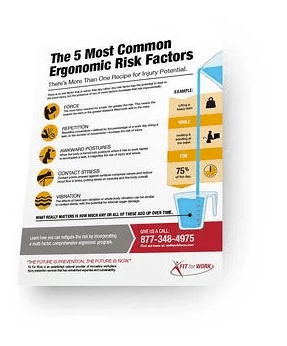Let’s say you have a 45-year-old employee who has a very physical job, and comes to you complaining of back soreness. This scenario plays out often at many job sites, and as safety managers know, what happens next is crucial for making sure the employee is treated correctly. What many may not realize is that perception can play a major role in situations like this. While it’s important to have a symptom response process, you need to be aware of the fact that there’s a very deliberate science in the way a medical provider can communicate in order to prevent the injury from worsening. Even more importantly, your company’s medical provider is very likely not trained in these concepts. For example, in a recent lecture, noted researcher, Physical Therapist and Ph.D. Tim Flynn notes that the “medical-industrial complex created, promoted, and sustained this epidemic of over-imaging, over-surgerizing, and overprescribing opioids to manage musculoskeletal pain.” That means that there’s a very good chance that whomever your employee sees for medical treatment may inadvertently escalate an employees condition, just by the words he or she uses or by the expectations they lay out. “Hmmm, well if you don’t get better, lets get an MRI to see what’s going on” is going to mislead a patient into thinking that an MRI is critical to understanding what is going on. In reality, MRIs are not indicated in many cases of lower back pain and as we’ve noted before, MRIs often lead to increased disability, surgeries and medications, higher health care costs, and lost time, etc. Perception is paramount when it comes to how a medical provider—or a supervisor—speaks to an injured employee. Words have power, and they can either harm or heal. Studies show that those who are having soreness are more sensitive to pain descriptions (“torn” rotator cuff, “slipped” disc, “ripped” the MCL). When that type of fear is perceived as part of a job, the result can be higher pain levels and more injuries being reported. At Fit For Work, our onsite injury prevention programs are geared toward focusing on the leading indicators to an injury, not just reacting to reports of soreness. Baked in those indicators is power of perception, and thus how incidents are handled (i.e. the employees experience). While from the outside it may seem subtle, understanding that there are key phrases and statements that are the difference between an employee reducing his or her anxiety about an issue or escalating the severity significantly will result in the realization of how impactful this component actually is. Sadly, most medical providers walk right past this part of the patient visit. By looking at factors like those, you can implement a much more meaningful program that has better health outcomes for your employees.
The Danger of False Perception and Medical Treatment





